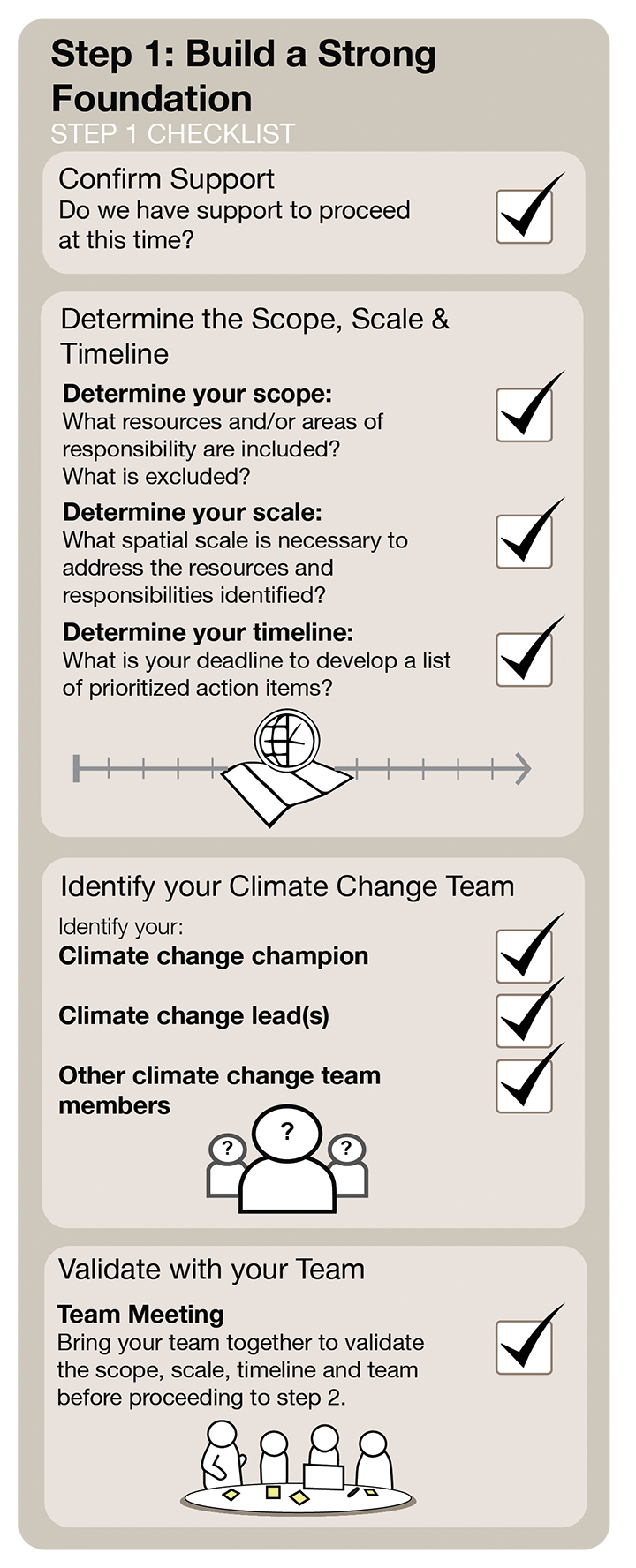- Heritage 101
- Advocacy
- Accessibility for Historic Places
- Climate & Sustainability
- Cultural Maps
- Heritage Place Conservation
- Heritage Policy & Legislation
- Homeowners
- Intangible Cultural Heritage
- Reconciliation
- Indigenous Cultural Heritage
- Setting the Bar: A Reconciliation Guide for Heritage
- 1. Heritage and Reconciliation Pledge
- 2. Acknowledging Land and People
- 3. Celebrating Days of Recognition and Commemoration
- 4. With a Commitment to Learn
- 5. Committing to Strategic Organizational Diversity
- 6. Mission-Making Room for Reconciliation
- 7. Possession, Interpretation, Repatriation and Cultural Care
- 8. Shared Decision Making
- 9. Statements of Significance and other heritage planning documents
- 10. Heritage Conservation Tools, Local Government Act
- Racism: Do Not Let the Forgetting Prevail
- Taking Action: resources for diversity and inclusion
- Webinars On-Demand
Step 1: Building a Strong Foundation

Step 1: Build a Strong Foundation
This step will help you determine if you have the necessary support to proceed with the planning process and the eventual implementation of the plan.
Here, you will identify your champions and leaders and you will start to assemble your team. Not only do you want to know who will undertake the work, but you will also want to know that you have the necessary authorizing support to take you through the planning process and successful implementation.
As you work through this step, you will start to describe what is to be included and excluded in the scope of work, what resources will be needed, and what timeline will be required. As you discover gaps and potential challenges, contemplate what you need to do in order to strengthen your planning process.
As you consider the following questions, you will develop a strong foundation for planning and implementation.
Jump to:
Introduction: Climate Adaptation – Framework and Implementation
Step 1: Building a Strong Foundation
Step 2: Assess Vulnerability and Risk
Step 3: Identify and Select Adaptation Options
Steps 4 and 5: Implement Adaptation Actions, Monitor and Evaluate
Climate Adaptation Worksheet – download
Do we have support to proceed with the planning process at this time?
- Are your organization’s managers and staff supportive of the process and ready to contribute?
- Has the board of directors or local government council agreed to the planning process?
- Have you begun a conversation with the owner of the site and/or sought approval to implement a climate adaptation plan?
- Have you begun conversations with other stakeholders and sought their buy-in? Have the influencers and stakeholders provided full support or are there gaps?
- Have you sought community input and buy-in to the planning process?
- What regulatory requirements must be considered before starting the planning process?
- What are the other considerations you must take into account?
- What else has been done in your community? Has your local or regional government or other local organizations prepared climate adaptation, mitigation, or emergency plans?
Identify your climate change champion
- Who in your organization has the expertise, ability, and time to champion the project?
Identify your climate change leads
- Who will be responsible for implementation?
Other climate change team members
- Are stakeholders and community groups represented on the team?
- Is there expertise in the community outside the organization? Are there other organizations that will benefit from your work or have a strong interest in climate adaptation?
What resources and areas of responsibility are included? What is excluded?
- What are the anticipated timelines for planning and implementation? What constraints will impact your schedule? How will you manage other activities or seasonal access so that they do not interrupt your progress?
- What are the anticipated funding resources? Have funds been set aside in your budget? What government funding programs are available to you (local, regional, provincial, federal)? What other funding programs are available to you (e.g., local foundations, service clubs)?
- What can realistically be tackled within the funding, time, and staffing constraints?
What is the spatial scale that needs to be considered?
- Will your plan include the entire site or a portion? Itemize the site elements that will be addressed in the climate adaptation plan. Explain why some areas will not be included in the climate adaptation plan.
- Does the plan need to consider other sites and areas that could influence your desired outcome? For example, flood planning and mitigation should consider the surrounding area as you look at external influences on your property. How could your mitigation efforts impact neighbouring properties?
What is your timeline to develop a list of prioritized action items?
- Is there a funding or management timeline you need to follow? What are the funding application deadlines?
- What are the pressing needs? Is there a desired or optimum order of steps and actions? What is urgent (and therefore needs to be done sooner) and what is important (a priority that does not need immediate attention)?
- What will influence your timeline (e.g., the opening of your season, winter closures, weather, annual activities)?
- Are there times when you will not be able to easily access the site (or have restricted access)?
